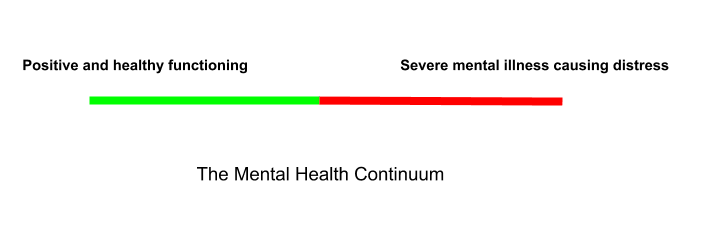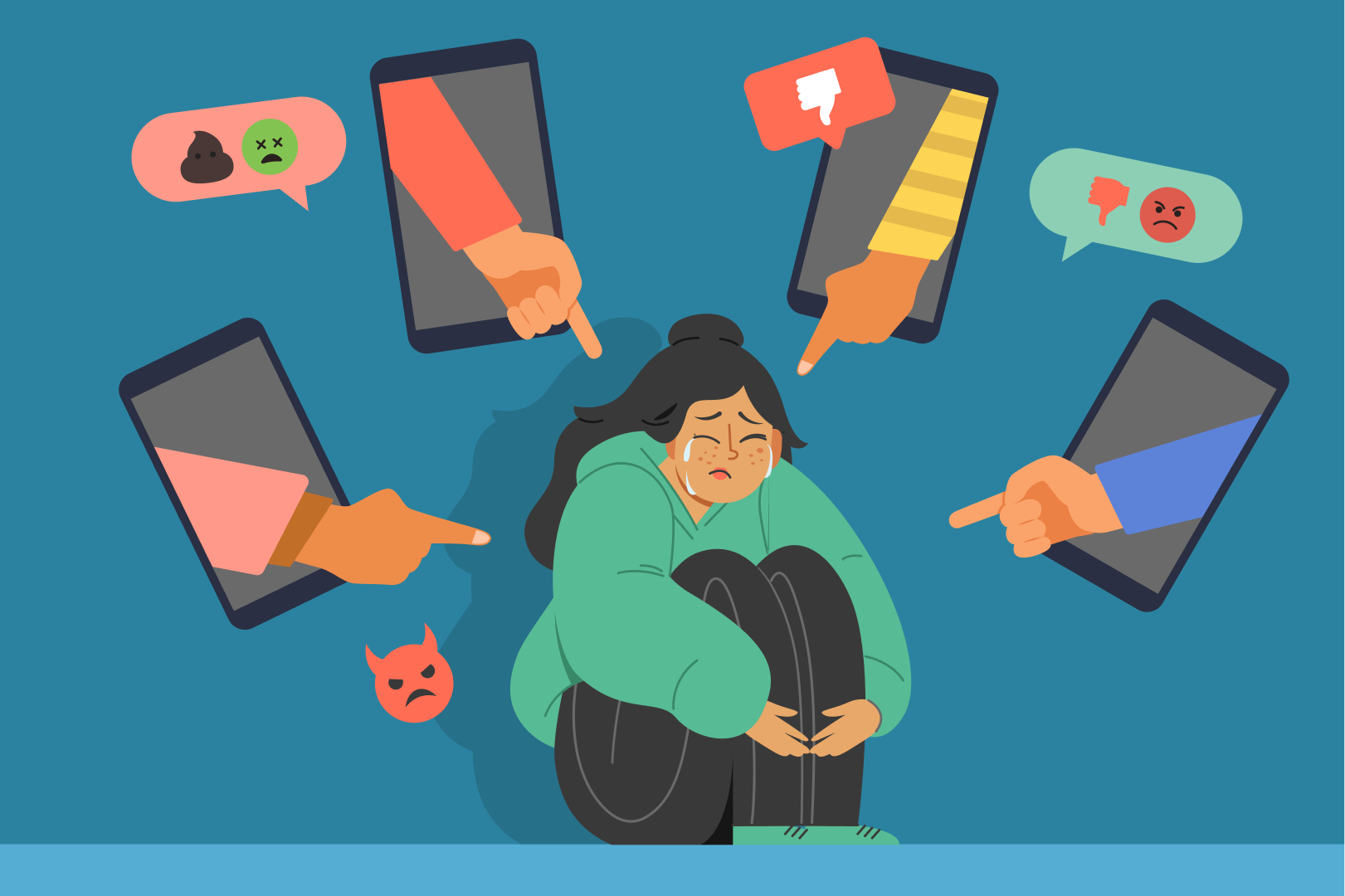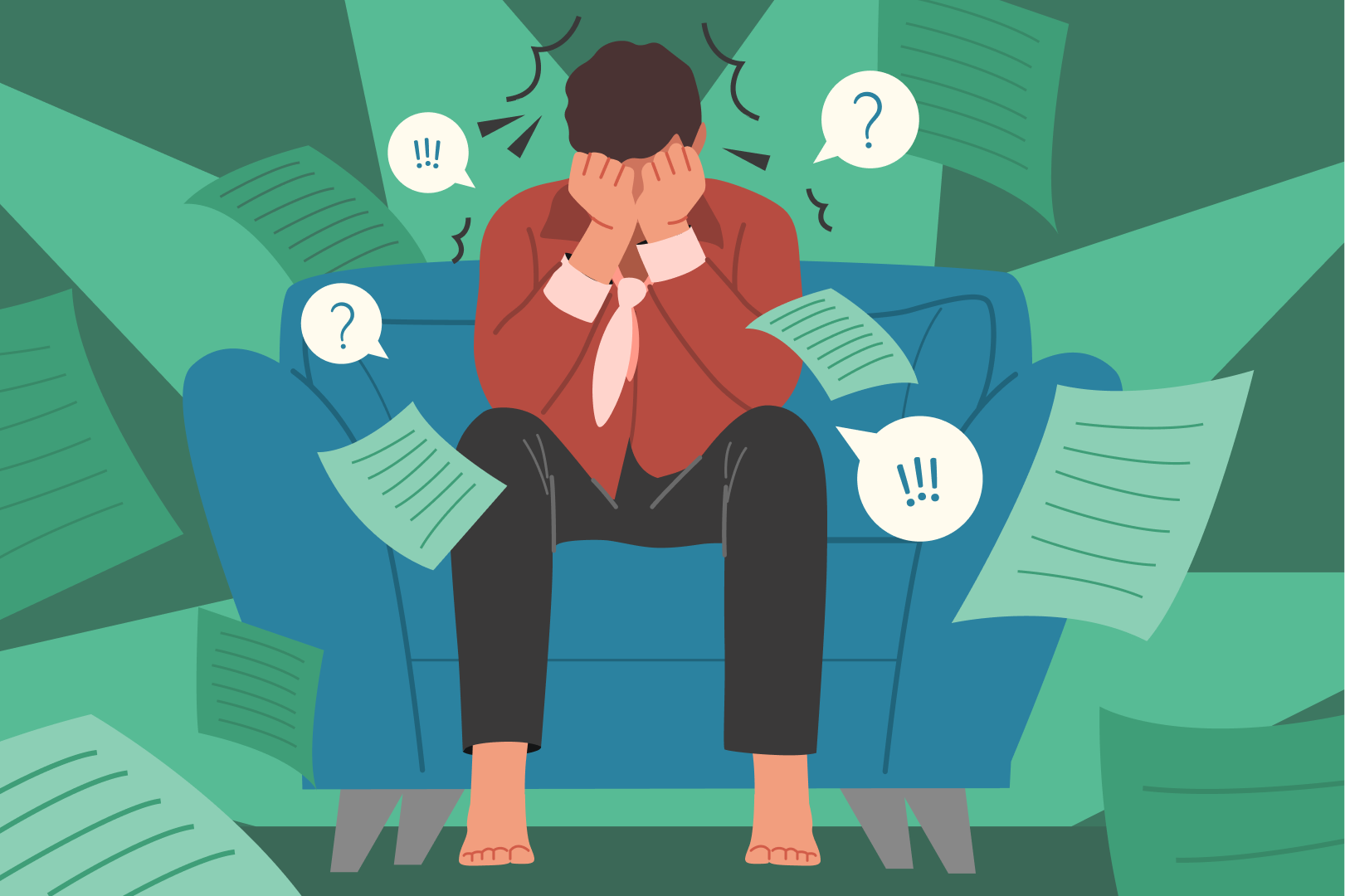Mental Health is as important as your physical health. Mental health is important at every stage in your life, from childhood and adolescence through to adulthood. It includes your ability to adapt to changes, cope with stress and develop meaningful relationships. Adolescence (10-19 years) is a unique phase with multiple physical, emotional and social changes. Some of these changes can be stressful especially if you have had an additional exposure to poverty, abuse, or violence it could impact your mental health.Young people (20-30 years) face challenges in choosing subjects to study in college, making career choices,finding a job, gaining financial independence and getting married.
Some of these changes can be stressful and you may need help and support especially if it starts affecting your sleep, eating habits, makes it difficult for you to get through the day, hampers your ability to form relationships and makes it emotionally difficult for you
Mental Health Parameters
Mental health is an integral and essential component of health.
The WHO constitution states: “Health is a state of complete physical, mental and social well-being and not merely the absence of disease or infirmity.”
It includes emotional well-being, psychological well-being, social well-being and involves being able to
- navigate successfully the complexities of life,
- develop fulfilling relationships,
- adapt to change,
- utilize appropriate coping mechanisms to achieve well-being without discrimination.
- realize their potential,
- have their needs met, and
- develop skills that help them navigate the different environments they inhabit.
ADOLESCENT AND YOUTH MENTAL HEALTH
WHO data
- Half of all mental health conditions start by 14 years of age and three-quarters by mid-20s but most cases are undetected and untreated
- Globally, depression is one of the leading causes of illness and disability among adolescents.
- Suicide is the third leading cause of death in 15-19-year-olds.
- The consequences of not addressing adolescent mental health conditions extend to adulthood, impairing both physical and mental health and limiting opportunities to lead fulfilling lives as adults.
Recently concluded National Mental Health Survey of India (2018) estimates the current prevalence of mental disorders in the age group of 18-29 yr at 7.39 per cent (excluding tobacco use disorder) and lifetime prevalence at 9.54 per cent. The prevalence of mental disorders (excluding SUDs) in the age group of 13-17 yr is reported to be 7.3 per cent.
Most young people are presumed to be healthy but, as per WHO, an estimated 2.6 million young people aged 10 to 24 yr die each year and a much greater number of young people suffer from illnesses ‘behaviours’ which hinder their ability to grow and develop to their full potential. Nearly two-thirds of premature deaths and one-third of the total disease burden in adults are associated with conditions or behaviours initiated in their youth (e.g. tobacco use, physical inactivity, high risk sexual behaviours, injury and violence and others). The behavioural patterns established during this developmental phase determine their current health status and the risk for developing some chronic diseases in later years
Factors affecting mental health:
Over the course of your life, if you experience mental health problems, your thinking, mood, and behavior could be affected. The biopsychosocial model of mental health considers three major factors that contribute to mental health:
- Biological : genetics factors, physical illnesses,biochemistry,chemical imbalance. intellectual or physical disability
- Psychological factors:childhood experiences, temperament,coping skills, personality factors like attitude, biases, self esteem, resilience, life events that affect the individual (eg.accidents,illness,loss,abuse, bullying, violence),life skills
- Social factors:influence of family, peers, teachers, community, social media, gender, religion, culture, socioeconomic status, poverty, lifestyle
Good mental health is more than just the absence of mental illness. It can be seen as a state of mental health that allows one to flourish and fully enjoy life.
Everyone experiences down times in life. The ability to cope with negative experiences varies greatly from one person to another and, in large part, determines whether people enjoy their lives.
Some of the factors that affect the mental health of youth are as follows:
- Self-esteem- This is the value we place on ourselves, our positive self-image and sense of self-worth. People with high self-esteem generally have a positive outlook and are satisfied with themselves most of the time.
- Feeling loved- Children who feel loved, trusted and accepted by their parents and others are far more likely to have good self-esteem. They are also more likely to feel comfortable, safe and secure, and are better able to communicate and develop positive relationships with others.
- Confidence- Youth should be encouraged to discover their own unique qualities and have the confidence to face challenges and take risks. Young people who are brought up to have confidence in themselves are more likely to have a positive attitude, and to lead happy and productive lives.
- Family breakup or loss- Separation or divorce or the loss of a parent or sibling is extremely painful. Finding ways to cope and adjust to the changes wrought by these events is critical for everyone, but particularly for youth. How grief is handled can affect young people negatively for years to come. If children are having difficulty coping, professional help is recommended.
- Difficult behaviour- When people are unhappy, they either internalise their unhappiness or act out. The latter usually appears as bad or difficult behaviour, such as using abusive language, being aggressive or violent, damaging property, stealing, lying, refusing to comply with requests or expectations at school or home, or displaying other inappropriate actions. If such behaviour is serious and persistent, the young person and his or her family might require professional help.
- Physical ill health- Diseases, injuries and other physical problems often contribute to poor mental health and sometimes mental illness. Some physical causes (such as birth trauma, brain injury or drug abuse) can directly affect brain chemistry and contribute to mental illness. More commonly, poor physical health can affect self-esteem and people’s ability to meet their goals, which leads to unhappiness or even depression. In such cases, receiving the best possible treatment for both the physical problem and the resulting psychological consequences is key to optimal recovery to good mental health.
- Abuse- The mental health of abused children is at great risk. Abused children are more likely to experience mental disorders or mental illness during childhood and into adulthood. Abuse may be physical, sexual, psychological or verbal. It may not always be evident or easily recognized. Regardless of the form it takes, abuse cannot be tolerated. Children need to be protected from abuse and helped to overcome its negative effects. Abuse can cause feelings of low self-esteem, lack of self-confidence, depression, isolation and anger; all feelings that impair a child’s chance to lead a happy life.
Trust in others and feelings of being safe and cared for are key components to recovery from abuse. Few children are able to recover on their own. Support is critical, and professional counselling is sometimes required. If abuse is discovered early, the chances of a child returning to a healthy state of mind and avoiding serious mental disorders are greatly enhanced.
What is the Mental Health Continuum?
The mental health continuum is a range having mental health and mental illness at the two extreme ends. Depending on the internal and external state of a person at any time, he can lie at one point of the continuum and shift position as his situation improves or deteriorates.
There are distinct markers within the mental health continuum:
The Healthy Point
People who lie at this point are generally satisfied and happy in their lives. They are emotionally well-balanced, stable, and goal-oriented.
The Problem Point
This is the mid-range of the continuum. People who lie at this point may show some distress and inability to cope, but are capable of performing daily life functions.
The Disorder Point
This is the end of the continuum, and as the name suggests, people falling under this category are unable to cope with stress and exhibit significant changes in their thoughts, behavior, and actions.

A Look at the Mental Health Continuum (MHC)Diagram
We experience stress every day, and sometimes it does take a toll on our happiness and well-being. Many of us succeed in overcoming the anxiety and bounce back to life, and their inner balance remains intact. But some unpleasant encounters dishevel the mind, and we might need a little support at those times to get back on our feet.
As the primary responder to stress, we should pay equal importance to the daily struggles as we pay to the more significant adversities. For example, exams, relationships, or financial crises are substantial stressors that can alter our mental stability in a day. However, equally potential stressors lie in daily worries such as arguments with parents, keeping safe during Covid.
The theory of MHC states that while identifying which point we lie at the present moment, we must consider all the little things that upset us, and work on minimizing them altogether. The continuum describes the different mental health conditions along with their physiological effects and suggests ways to improve both.
The diagrammatic representation of MHC depicts:
- Healthy and adaptive coping state.
- Mild and reversible distress state.
- Severe and persistent impairment.
- Clinically significant mental disorder.
It is important to remember that we all are capable of moving from one end to the other end of the continuum. Being in the red zone does not imply that we cannot be in the green zone again, and vice versa. Below is a brief description of the main features of the mental health continuum model:
Stage | Characteristics | Ways to improve/sustain |
Positive, healthy functioning | Stable mood with minimum fluctuations. Overall calm and peaceful state of mind. Contentment with life. Self-motivated and energetic. Physically healthy. | Prioritize tasks. Break problems into smaller chunks and address one at a time. Maintain a healthy lifestyle. |
Neutral, reactive state. | Nervousness and worry. Vulnerability to stress. Feeling overwhelmed. Self-doubt causes anxiety to perform. Tiredness and lack of energy. | Recognize abilities and limitations. Get a healthy diet plan and fitness regime. Engage in more social activities. Get adequate rest. |
Damaged and moderately ill | Persistent sadness and feelings of inadequacy. Restlessness and irritability. Lack of motivation to take up new challenges. Overall feeling of apathy and unexplained fatigue to perform daily duties. Deterioration in personal and professional relationships. Substance and drug abuse. | Self-awareness. Try to get to the root cause of stress. Seek help. Get an emotional support system (e.g., family, friends, kids, therapist, colleagues). |
Severe mental illness | Extreme anxiety-causing social isolation. Extreme mood swings. Sleeping and eating disorders. Alcohol or drug abuse. Inability to perform daily responsibilities, including basic self-care. Marked deterioration in academic or professional achievements. | Go for professional assistance. Try to stay around others as much as possible. Follow the treatment plan. Try to regain your previous health routine. |

The Illness-Wellness Continuum
Dr. John Travis (1972) created the Illness-Wellness Continuum, intending to inspire people rather than treat them. He formulated the continuum and a Wellness Inventory with some valuable inputs on how lifestyle modification can bring a positive shift in mindset and move us to the wellness end of the continuum.
The concept focuses on building well-being through responsibility, emotional control, deep insight, and mindful, holistic awareness. The Illness-Wellness Continuum runs on three key concepts of well-being:
- Wellness is a process; it is always moving up and down, right, and left. Moving from one paradigm to another does not signify personal achievement or shortcoming, it is a natural process we all go through at some point in life.
- Presence of illness does not imply the absence of wellness and vice versa. They differ in degree and do not follow an all-or-none principle.
- At any point, we have the potential to push ourselves from illness to wellness.
The key takeaway of the concept of mental health continuum is that human coping effectiveness is always changing. We have the potential to drive ourselves from the negative to the not-so negative, and finally to the positive end of the continuum.
The Biopsychosocial model of Mental Health

As we go through life and the environment changes, our brain and it functions also changes. Likewise, a person’s genetic makeup and the environment they interact with will have a profound effect on their mental health, biological health and their brain functions. In order to truly understand someone’s mental health, we must take into account all of the factors affecting them both positively and negatively in order to get a better picture of their overall health and well-being.
According to Drs. George Engel and John Romano, the biopsychosocial perspective is more appropriate when analyzing the causes of mental illness. This model introduces the idea that there are biological, psychological, and social determinants to mental health. This idea links the outside world to someone’s biology and psyche. It also involves our consciousness, sentiments, and behaviors.
One reason why the biopsychosocial perspective is so useful is because it explains how some people who are seemingly “healthy” can get mental illnesses and why some are more prone to mental illness than others. Those who are mentally healthy most likely exercise, have positive energy and strong social bonds does not exempt them from mental illness. The biopsychosocial perspective gives evidence that although someone can be mentally healthy at some point in their life, they can still experience mental illness if their biopsychosocial balance is disturbed.
- According to the biopsychosocial model, interactions between people’s genetic makeup (biology), mental health and personality (psychology), and sociocultural environment (social world) contribute to their experience of health or illness.
- The biological influences on mental health and mental illness are varied, and include genetics, infections, physical trauma, nutrition, hormones, and toxins.
- The psychological component looks for potential psychological explanations for a health problem, such as lack of self-control, emotional turmoil, or negative thinking.
- Social and cultural factors are conceptualized as a particular set of stressful events (being laid off, for example) that can differentially impact mental health depending on the individual and his or her social context.
- The biopsychosocial theory posits that each one of these factors is not sufficient to create health or mental illness, but the interaction between them determines the course of one’s development.
This perspective can give clinical workers many benefits when treating a mentally ill patient. They are now able to apply every aspect of the patient’s life to their illness. Those with mental illness can now gain a sense of self-awareness. Mental illness sufferers can understand their health as a whole entity with several parts that function together. It also broadens the way we view a mental illness by no longer looking at it as a black or white issue. The biopsychosocial perspective also challenges the stigma on mental illness by enabling people to realize that anyone can suffer from a mental illness because we all have biological, psychological, and social influencers








